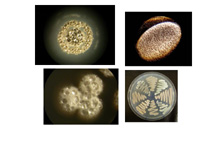
|
 |
Study of antibiotic resistance in the soil help predict future clinical emergence
Jan 20, 2006 - 3:40:00 PM, Reviewed by: Dr. Priya Saxena
|
|
"By evolving in an environment of antibiotic production, incredibly resilient bacteria must develop diverse ways to survive or resist the toxic antimicrobial compounds produced by their neighbors. Their coping tactics may be able to give us a glimpse into the future of clinical resistance to antibiotics."
|
By McMaster University,
Dirt may be a key to how bacteria that infect humans develop a resistance to antibiotic drugs.
In an article in the January 20 issue of the journal Science, McMaster University researchers say that study of bacteria found in dirt may be the key in identifying how and why antibiotic resistance happens in bacteria that infect people, predicting future clinical problems, and testing new antibiotics.
Antibiotic resistance has become an increasing public health concern because the organisms that cause infections in humans and animals are becoming less receptive to the healing aspect of antibiotic drugs.
The team led by professor Gerry Wright, chair of Biochemistry and Biomedical Sciences of the Michael G. DeGroote School of Medicine, found that the numerous ways soil-dwelling bacteria become resistant to antibiotics are identical to the resistance patterns seen in patients.
These soil-dwelling bacteria also play a central role in the treatment of infectious diseases. Approximately two-thirds of all known antibiotics are produced by bacteria called actinomycetes, commonly found in soils, compost, and other environmental sources.
"By evolving in an environment of antibiotic production, incredibly resilient bacteria must develop diverse ways to survive or resist the toxic antimicrobial compounds produced by their neighbors," said Wright. "Their coping tactics may be able to give us a glimpse into the future of clinical resistance to antibiotics."
"This research suggests that not only can the study of resistance in the soil help predict future clinical emergence, but it can also guide the development of therapies to counteract this resistance."
Researchers screened 480 strains of soil bacteria isolated from diverse locations for resistance to 21 clinically relevant antibiotics. At high drug concentrations, the soil-dwelling bacteria displayed a stunning level of resistance. Not only were the bacteria resistant to an average of seven to eight antibiotics, but every strain was found to be multi-drug resistant.
The bacteria showed resistance to all major classes of antibiotics, regardless of whether the compounds were naturally produced, semi-synthetic, or completely synthetic.
Researchers also found that the way bacteria was resistant to vancomycin, one of the most commonly prescribed antibiotics for drug resistant staphylococcal infections, was identical to resistance found in clinics.
Furthermore, the researchers' uncovered bacteria that produced enzymes capable of breaking down or modifying or rendering inactive two recently U.S. FDA-approved antibiotics, a situation which has yet to emerge clinically for these drugs.
"The link between clinical and soil-associated resistance to vancomycin illustrates the value of studying resistance in the soil to rationally anticipate future clinical resistance," said Wright. "It suggests that the soil serves as an under-recognized source of resistance, resistance that has the potential to reach clinics.
"This work could prove to be extremely valuable to the drug development process, complementing traditional laboratory studies of clinical situations. By screening newly developed drugs for resistance in soil bacteria, not only can pharmaceutical companies can gain a better understanding of what may emerge in the future as clinical problems, but sufficient warning can be given to hospital microbiology laboratories, physicians and the drug discovery sector to allow for the development of diagnostic techniques and alternative therapies.
 |
| Sporulating soil isolates. Top Left: Soil Isolate PP#15, inactivates daptomycin Top Right: Soil Isolate Cu#22 Bottom Left: Soil Isolate WMB#19 Bottom Right: Trimethoprim Resistant Soil Isolates |
"Furthermore, studying enzymes that inactivate antibiotics can serve as a foundation for the development of new combination therapies for resistant bacterial strains. Studying antibiotic resistance from an evolutionary perspective is one way that researchers are attempting to stay one step ahead of resistant bacteria."
Antibiotic resistant bacteria have become a major health threat and have limited our ability to treat even common infections with antibiotics," said Dr. Bhagirath Singh, Scientific Director of the Canadian Institutes of Health Research Institute of Infection and Immunity. "Dr. Wright's exciting discovery points to the fact that in nature, bugs in the soil survive in a very hostile environment. They do this by developing resistance to the antibiotics produced by other soil bacteria. Understanding this process opens up a new avenue for finding new therapies to prevent and treat antibiotic resistance in a clinical setting. 
- January 20 issue of the journal Science
www.mcmaster.ca
This research was funded by the Canadian Institutes of Health Research and by a Canadian Research Chair.
|
For any corrections of factual information, to contact the editors or to send
any medical news or health news press releases, use
feedback form
Top of Page
|
|
|
|